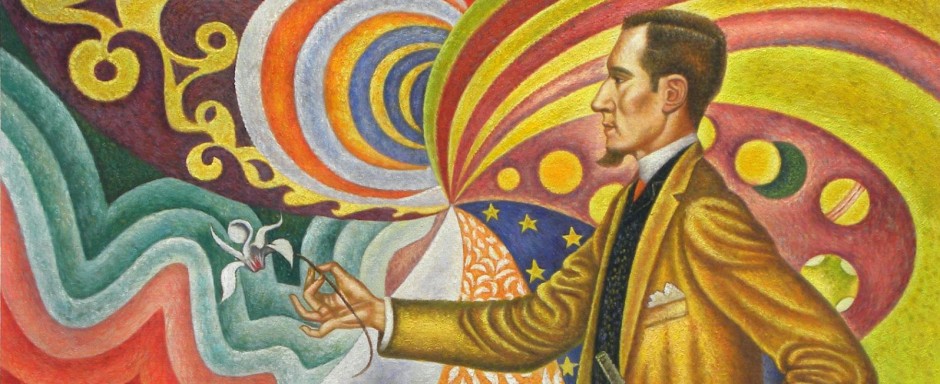The resurrection of Guy Debord
The Guardian
March 18, 2009
“The situationist arch-rebel has finally been recognised as a ‘national treasure’ in France – but would he have appreciated it?”
Who cares. He’s dead. And the nature of Monkey is… irrecuperable!
(See also : Crack Open the Shells, Hal Foster, London Review of Books, March 12, 2009.)
When he wasn’t dead, Debord was drinking. “Among the small number of things that I have liked and known how to do well, what I have assuredly known how to do best is drink. Even though I have read a lot, I have drunk even more.” He thus managed to combine the ‘social’ and the ‘lifestyle’.
Speaking of The Devil…
Bridging the Unbridgeable Chasm: On Bookchin’s Critique of the Anarchist Tradition
John Clark
Perspectives
2009One of Murray Bookchin’s best-known works is Social Anarchism or Lifestyle Anarchism: An Unbridgeable Chasm. In it, he argues that two quite distinct and incompatible currents have traversed the entire history of anarchism. He labels these two divergent tendencies “social anarchism” and “lifestyle anarchism,” and contends that between them “there exists a divide that cannot be bridged.”
The idea that there is an “unbridgeable chasm” between two viewpoints that share certain common presuppositions and goals, and whose practices are in some ways interrelated, is a bit suspect from the outset. It is particularly problematic when proposed by a thinker like Bookchin, who claims to hold a dialectical perspective. Whereas nondialectical thought merely opposes one reality to another in an abstract manner, or else places them inertly beside one another, a dialectical analysis examines the ways in which various realities presuppose one another, constitute one another, challenge the identity of one another, and push one another to the limits of their development. Accordingly, one important quality of such an analysis is that it helps those with divergent viewpoints see the ways in which their positions are not mutually exclusive but can instead be mutually realized in a further development of each.
Nevertheless, Bookchin contends that there is an absolute abyss between two tendencies within contemporary anarchism. One is what he depicts as an individualist and escapist current that he sees as increasingly dominating the movement, while the other is a communally oriented and socially engaged form of anarchism, which he sees as in a process of continual retreat. Bookchin argues that this stark dichotomy has its roots in the history of anarchism, and that certain flaws in the very mainstream of historical anarchism have contributed to the ways in which the contemporary movement has gone astray. He presents his “unbridgeable chasm” thesis as follows: “Stated bluntly: Between the socialist pedigree of anarcho-syndicalism and anarcho-communism (which have never denied the importance of self-realization and the fulfillment of desire), and the basically liberal, individualistic pedigree of lifestyle anarchism (which fosters social ineffectuality, if not outright social negation), there exists a divide that cannot be bridged unless we completely disregard the profoundly different goals, methods, and underlying philosophy that distinguish them.”
It will be argued here that this analysis is based on a fallacious reading of the history of anarchism. It will be shown that the anarchist tradition has been investigating the dialectic between the individual and social dimensions of freedom with considerable seriousness throughout its history. An apt depiction of the anarchist view of the relation between the personal and social dimensions is found in Alan Ritter’s concept of “communal individuality.” Ritter, a careful student of classical anarchist thought, explains that in espousing communal individuality, the anarchist tradition asserts that personal autonomy and social solidarity, rather than opposing one another, are inseparable and mutually reinforcing. He sees the theoretical defense of this synthesis to be “the strength of the anarchists’ thought.” One might add that one of the great achievements of anarchist practice has been the actualization of this theoretical synthesis in various social forms, including personal relationships, affinity groups, intentional communities, cooperative projects, and movements for revolutionary social transformation. In the analysis that follows, Bookchin’s critique of the record of anarchism in these areas will be assessed…
*Oh yeah. Call me Un-Australian, but Robert Graham’s blog is an excellent resource, weaving together as it does a vast array of anarchist writers, from all over this bright green dying globe. Further:
The metaphor of anarchism as a current of theory and practice ever changing and flowing like a river, with different sources, tributaries, eddies and currents, has been used by a variety of writers, such as George Woodcock and Peter Marshall. I think it’s an apt metaphor, and that’s one reason I’ve chosen it as the subtitle for Volume Three of Anarchism: A Documentary History of Libertarian Ideas. It’s also a play on words meant to indicate that this Volume will be documenting current or contemporary trends in anarchist thought. Here is a tentative table of contents…
How excitement! I also look forward to stealing borrowing PEte’s copy of Black Flame: The Revolutionary Class Politics of Anarchism and Syndicalism, CounterPower Vol. I by Michael Schmidt and Lucen van der Walt (AK Press, 2009).

Your posts are getting wilder (so to speak) -Turbonegro, Bookchin and amazingly “Volume 3 ” of anarchism – all in the one post!
It’s sheer anarchy!
I would have to agree with Bookchin’s analysis….I’ve known social anarchists..those that participate in social movements for the progress of all the people involved..some of my comrades in the IWW that I liaise with in Union Solidarity, for example, and I’ve known the ‘lifestylers’..bitching about any and every group around, using criticism freely yet doing nothing of any relevance for anyone but themselves..feathering their own nest, so to speak. Some of the lifestylers progress to the social, but not many..In my opinion, of course!
ps. dug the Kreator clip recently!